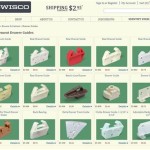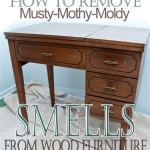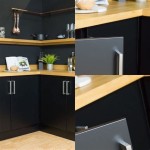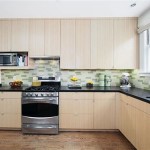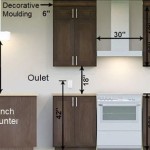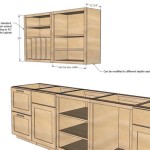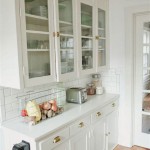How To Remove Grease From Kitchen Cabinets Before Painting
Preparing kitchen cabinets for a fresh coat of paint is a crucial step that determines the longevity and quality of the finished project. One of the most significant challenges encountered during this preparation phase is the removal of accumulated grease and grime. Kitchen cabinets, especially those near the stove, are prone to collecting airborne grease particles, cooking splatters, and general kitchen messes. Painting over these contaminants can lead to paint adhesion issues, resulting in peeling, cracking, and an overall unsatisfactory appearance. Therefore, a thorough degreasing process is essential for achieving a smooth, durable, and aesthetically pleasing paint job. This article outlines detailed steps and methods for effectively removing grease from kitchen cabinets before painting, ensuring optimal paint adhesion and a professional-looking outcome.
The importance of degreasing cannot be overstated. Grease acts as a barrier, preventing the paint from properly bonding with the cabinet surface. The paint may initially appear to adhere, but over time, the bond weakens, leading to paint failure. Moreover, grease can contaminate the paint itself, altering its color, finish, and drying properties. Investing the time and effort into properly degreasing the cabinets beforehand will save significant time and resources in the long run by avoiding the need for premature repainting or touch-ups. This process not only prepares the surface for painting but also contributes to a cleaner and healthier kitchen environment.
Assessing the Grease Level and Cabinet Material
Before commencing the degreasing process, it's crucial to assess the extent of grease accumulation and identify the type of material the cabinets are made of. Grease buildup can range from a light film to a thick, hardened layer. Visually inspect all cabinet surfaces, paying particular attention to areas around the stove, oven, and sink. Run a gloved hand over the surfaces to gauge the amount of grease present. Heavily soiled areas may require more intensive cleaning methods and multiple cleaning cycles.
Identifying the cabinet material is equally important as it dictates the appropriate cleaning solutions and techniques to use. Common cabinet materials include wood (various types, such as oak, maple, and pine), laminate, veneer, and painted surfaces. Some cleaning agents can damage or discolor certain materials, so it's essential to select products that are compatible with the specific cabinet material. For instance, harsh chemicals may damage veneer or painted surfaces, while gentler solutions may be insufficient for removing heavy grease buildup on solid wood cabinets. If uncertain about the cabinet material, consult the manufacturer's documentation or test a small, inconspicuous area with the chosen cleaning solution before applying it to the entire surface.
Once the assessment is complete, gather the necessary supplies and tools. The following list provides a comprehensive overview of items typically required for degreasing kitchen cabinets:
- Cleaning solutions (e.g., degreasing dish soap, trisodium phosphate (TSP), all-purpose cleaner, vinegar solution)
- Warm water
- Spray bottles
- Microfiber cloths or soft rags
- Scrub brushes (soft-bristled)
- Sponges
- Protective gloves
- Safety glasses
- Drop cloths or plastic sheeting
- Painter's tape
- Screwdriver (for removing hardware)
Having all the necessary supplies readily available will streamline the degreasing process and ensure efficiency.
Effective Degreasing Methods and Techniques
Several effective methods can be employed to remove grease from kitchen cabinets, each with its own advantages and disadvantages. The choice of method depends on the severity of the grease buildup, the type of cabinet material, and personal preference. Regardless of the chosen method, always wear protective gloves and safety glasses to prevent skin and eye irritation. Ensure adequate ventilation in the kitchen by opening windows or using a fan.
1. Dish Soap and Warm Water: This is often the first line of defense and is suitable for removing light to moderate grease buildup. Mix a generous amount of degreasing dish soap with warm water in a bucket. Dip a microfiber cloth or sponge into the soapy water, wring out the excess, and gently wipe down the cabinet surfaces. Pay attention to corners, edges, and crevices where grease tends to accumulate. Rinse the cloth frequently in clean water and continue wiping until all surfaces are clean. After cleaning, use a clean, dry cloth to thoroughly dry the cabinets. This method is gentle and safe for most cabinet materials, including wood, laminate, and painted surfaces.
2. Vinegar Solution: Vinegar is a natural degreaser and cleaner that can effectively remove grease and grime. Mix equal parts white vinegar and warm water in a spray bottle. Spray the solution onto the cabinet surfaces and let it sit for a few minutes to loosen the grease. Wipe down the cabinets with a clean microfiber cloth or sponge. For stubborn grease, allow the vinegar solution to sit for a longer period (up to 15 minutes) before wiping. Vinegar has a strong odor, so ensure adequate ventilation during and after cleaning. The vinegar solution is generally safe for most cabinet materials but should be tested on an inconspicuous area first, especially on painted surfaces.
3. All-Purpose Cleaner: Many commercially available all-purpose cleaners are formulated to cut through grease and grime. Choose a cleaner that is specifically designed for kitchen use and is safe for the cabinet material. Follow the manufacturer's instructions for dilution and application. Spray the cleaner onto the cabinet surfaces and wipe down with a clean cloth or sponge. Ensure that all cleaner residue is removed by wiping with a clean, damp cloth. Exercise caution when using all-purpose cleaners on painted surfaces, as some formulas can be harsh and may damage the finish. Test the cleaner on an inconspicuous area before applying it to the entire surface.
4. Trisodium Phosphate (TSP): TSP is a powerful degreaser and cleaner that is effective for removing heavy grease buildup. However, it is also a strong chemical and should be used with caution. Always wear protective gloves, safety glasses, and a respirator when working with TSP. Mix TSP powder with warm water according to the manufacturer's instructions. Dip a sponge or cloth into the TSP solution and wipe down the cabinet surfaces. Rinse thoroughly with clean water to remove all TSP residue. TSP can be corrosive and may damage certain surfaces, so it is essential to test it on an inconspicuous area first and use it sparingly. TSP is not recommended for use on painted surfaces, as it can strip the paint.
5. Baking Soda Paste: Baking soda is a mild abrasive that can help remove stubborn grease and grime without scratching the cabinet surfaces. Mix baking soda with a small amount of water to form a paste. Apply the paste to the greasy areas and gently scrub with a soft-bristled brush or sponge. Wipe away the paste with a damp cloth and dry the cabinets thoroughly. Baking soda is a relatively gentle cleaner and is safe for most cabinet materials, but it is always advisable to test it on an inconspicuous area first.
6. Steam Cleaning: Steam cleaning can be an effective and environmentally friendly way to remove grease from kitchen cabinets. A steam cleaner uses hot steam to loosen and dissolve grease and grime. Direct the steam nozzle towards the greasy areas and wipe away the loosened residue with a clean cloth. Steam cleaning is particularly effective for removing grease from hard-to-reach areas, such as corners and crevices. However, it is essential to exercise caution when using steam cleaners on wood cabinets, as excessive moisture can damage the wood. Avoid prolonged exposure to steam and ensure that the cabinets are thoroughly dried after cleaning.
Preparing for Painting After Degreasing
After thoroughly degreasing the kitchen cabinets, further preparation is required before the painting process can begin. These final steps ensure optimal paint adhesion and a professional finish. Allow the cabinets to dry completely after degreasing. This may take several hours or even overnight, depending on the humidity and ventilation in the room. Damp cabinets can prevent the paint from properly adhering and may lead to blistering or peeling.
Once the cabinets are dry, inspect them for any remaining grease or grime. If necessary, repeat the degreasing process on any areas that still show signs of grease buildup. Remove all hardware, such as knobs, pulls, and hinges, from the cabinets. This will allow for easier painting and prevent the hardware from being accidentally painted over. Store the hardware in a safe place to avoid losing any pieces. Lightly sand the cabinet surfaces with fine-grit sandpaper (e.g., 220-grit) to create a slightly rough surface that will promote better paint adhesion. Sanding also helps to remove any remaining imperfections or blemishes. After sanding, use a tack cloth or a damp cloth to remove all dust and debris from the cabinets. Dust can interfere with paint adhesion and create a uneven finish.
Apply painter's tape to protect any areas that you do not want to paint, such as walls, countertops, or trim. Ensure that the tape is applied firmly and smoothly to prevent paint from seeping underneath. Apply a primer to the cabinets before painting. Primer helps to create a uniform surface, blocks stains, and further enhances paint adhesion. Choose a primer that is compatible with the type of paint you will be using. Allow the primer to dry completely according to the manufacturer's instructions before applying the paint. Following these preparatory steps after degreasing will ensure that the paint adheres properly, resulting in a durable and aesthetically pleasing finish for the kitchen cabinets.

How To Clean Prep Wood Kitchen Cabinets Before Painting Do Dodson Designs

My 6 Top Picks For Degreasing Kitchen Cabinets Before Painting

How To Clean Prep Wood Kitchen Cabinets Before Painting Do Dodson Designs

My 6 Top Picks For Degreasing Kitchen Cabinets Before Painting

The Best Way To Clean Kitchen Cabinets Before Painting In 2024

How To Clean Kitchen Cabinets Before Painting

Degrease Kitchen Cabinets With An All Natural Homemade Cleaner

How To Clean Cabinets Before Painting Ultimate Guide With Pro Tips Grace In My Space

How To Clean Kitchen Cabinets Everyday Skate

The Best Way To Clean Kitchen Cabinets Before Painting In 2024
Related Posts

